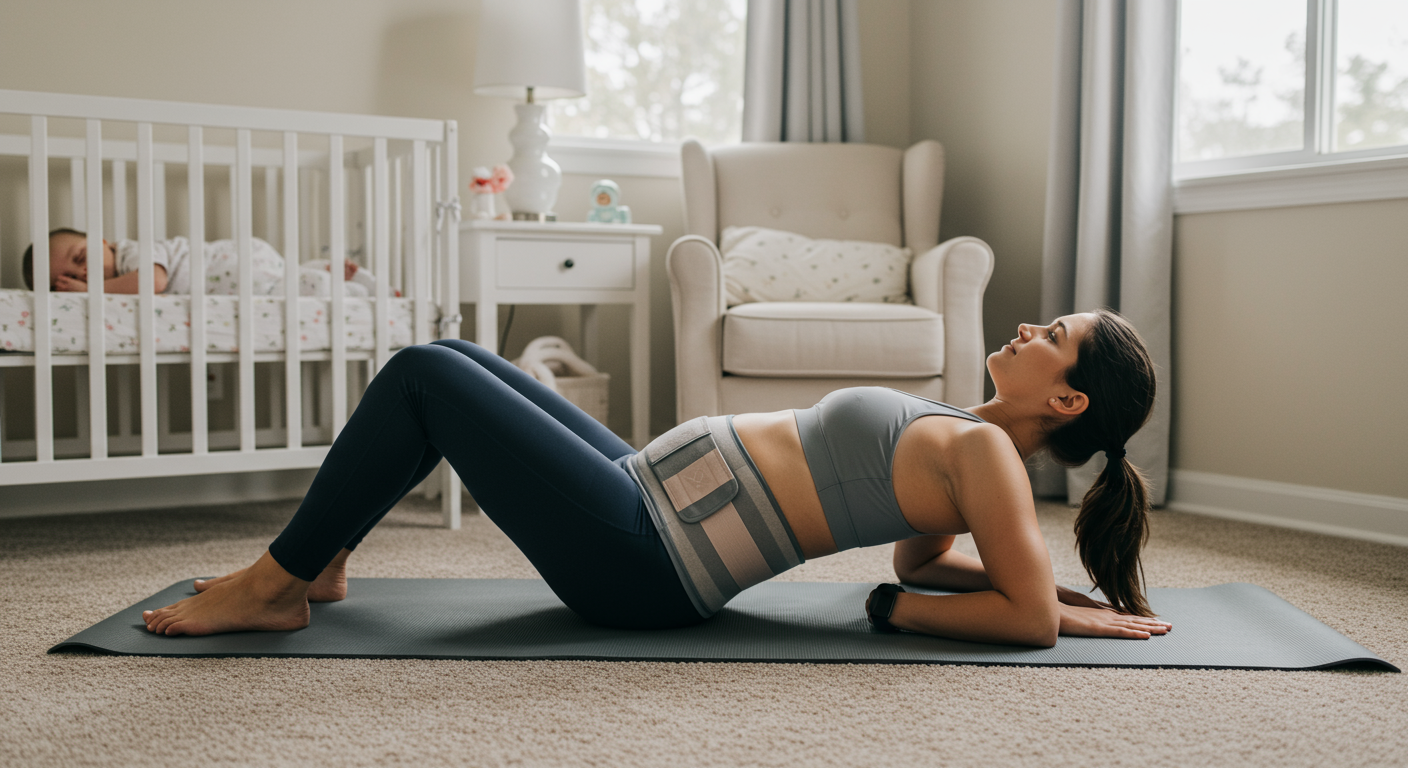What is Diastasis Recti?
Diastasis recti occurs when the rectus abdominis muscles (your “six-pack” muscles) separate along the midline of your abdomen. The connective tissue called the linea alba that normally holds these muscles together stretches and thins, creating a gap that can range from mild to severe.
Key Facts About Diastasis Recti:
- Affects approximately 60% of postpartum women
- Can also occur in men, infants, and women who haven’t given birth
- Medically defined as a gap of 2.7 cm (about 1 inch) or more between abdominal muscles
- Often develops during the third trimester of pregnancy
- May not be noticeable until several weeks after delivery
Common Causes and Risk Factors
Primary Causes:
- Pregnancy – The most common cause, as the growing uterus puts significant pressure on abdominal muscles
- Multiple pregnancies – Risk increases with each pregnancy
- Carrying multiples – Twin or triplet pregnancies create additional stretching
- Advanced maternal age – Older mothers may have less elastic connective tissue
Additional Risk Factors:
- Obesity or significant weight gain
- Heavy lifting with improper form
- Chronic coughing or sneezing
- Previous abdominal surgeries
- Genetic predisposition to weak connective tissue
- Rapid weight changes
Recognizing the Signs and Symptoms
Visual Indicators:
- A visible bulge or “pooch” in the middle of your abdomen
- A ridge running down the midline of your belly when contracting abs
- Belly that appears to dome or cone during certain movements
- Persistent bloated appearance
Physical Symptoms:
- Lower back pain or discomfort
- Poor posture
- Pelvic floor dysfunction
- Constipation or bloating
- Difficulty with core stability
- Feeling of weakness in the abdominal area
How to Check for Diastasis Recti
Self-Assessment Test:
- Lie on your back with knees bent at 90 degrees, feet flat on the floor
- Place your fingers horizontally across your belly button
- Lift your head slightly off the ground, drawing chin to chest
- Feel for a gap between the muscles
- Measure the width – if you can fit 2 or more fingers, you likely have diastasis recti
- Check multiple points – test above and below the belly button as gaps can vary
Professional Diagnosis:
- Physical examination by healthcare provider
- Ultrasound for precise measurements
- Assessment of connective tissue quality
- Evaluation of associated conditions
The Role of Abdominal Binders in Recovery
Abdominal binders provide crucial support during the recovery process by:
Immediate Benefits:
- Stabilizing the core – Provides external support while muscles heal
- Reducing discomfort – Minimizes pain from stretched tissues
- Improving posture – Helps maintain proper alignment
- Supporting daily activities – Makes movement more comfortable
Long-term Support:
- Maintains proper muscle positioning during healing
- Reduces stress on weakened connective tissue
- Provides proprioceptive feedback for better body awareness
- Complements exercise rehabilitation programs
Choosing the Right Abdominal Binder
Key Features to Look For:
- Adjustable compression – Allows customization as you heal
- Breathable materials – Ensures comfort during extended wear
- Proper width – Should cover the entire affected area
- Quality fasteners – Secure closure that won’t slip
- Appropriate sizing – Measure at the largest part of your abdomen
When to Wear:
- During daily activities that stress the core
- While performing approved exercises
- When lifting or carrying (even light objects)
- As recommended by your healthcare provider
Recovery Strategies and Timeline
Early Stage (0-6 weeks postpartum):
- Focus on gentle breathing exercises
- Wear abdominal binder for support
- Avoid activities that cause doming
- Practice proper body mechanics
Progressive Recovery (6-12 weeks):
- Begin targeted core exercises as approved
- Continue using abdominal support
- Gradually increase activity levels
- Monitor progress with regular self-checks
Long-term Management:
- Maintain consistent exercise routine
- Use abdominal binder during challenging activities
- Focus on whole-body strength and alignment
- Consider professional guidance if progress plateaus
Exercises to Avoid
Certain movements can worsen diastasis recti:
- Traditional crunches or sit-ups
- Planks (until cleared by professional)
- Heavy lifting without proper support
- Twisting movements under load
- Any exercise causing abdominal doming
When to Seek Professional Help
Consult a healthcare provider if you experience:
- Gap wider than 3 finger-widths
- Persistent pain or discomfort
- No improvement after 12 weeks of conservative treatment
- Bulging that worsens with time
- Signs of hernia development
Living with Diastasis Recti
Remember that diastasis recti is a manageable condition. With proper support, targeted exercises, and patience, most people see significant improvement. An abdominal binder can be an invaluable tool in your recovery journey, providing the stability and confidence you need to heal properly.
Key Takeaways:
- Diastasis recti is common but treatable
- Early intervention leads to better outcomes
- Proper support is crucial for recovery
- Patience and consistency are essential
- Professional guidance can accelerate healing
Whether you’re newly postpartum or dealing with long-standing abdominal separation, understanding your condition is the first step toward recovery. Combined with appropriate medical care and quality abdominal support, you can work toward restoring your core strength and function.




